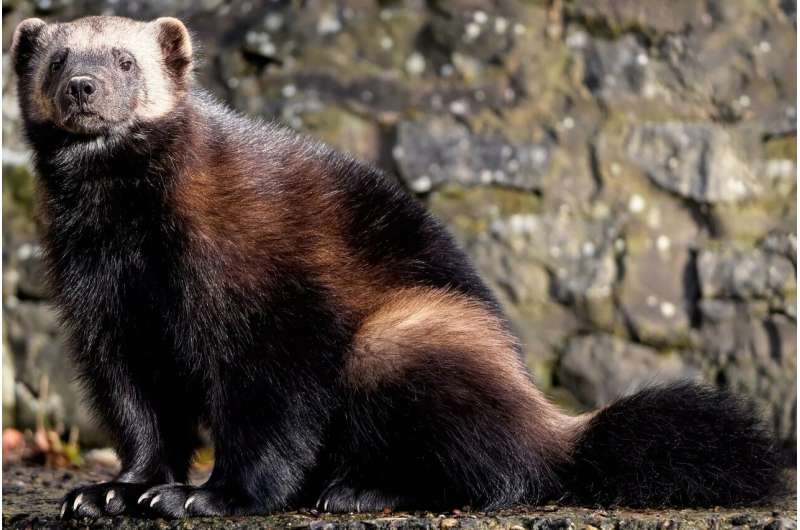This article has been reviewed according to Science X's editorial process and policies. Editors have highlighted the following attributes while ensuring the content's credibility:
fact-checked
reputable news agency
proofread
Wolverines to return to Colorado decades after near-extermination in the West

A solitary, wandering weasel species capable of traversing mountain passes and covering up to 15 miles a day will return to Colorado after a century-long absence.
The wolverine will be the next native species to be reintroduced to the state after Gov. Jared Polis on Monday signed a bill authorizing the process, which will likely take years.
"This legislation represents a significant commitment to restoring a native species back to Colorado's landscape," Department of Natural Resources Executive Director Dan Gibbs said in a news release. "Colorado has some of the best remaining unoccupied habitat for wolverines, and we have the opportunity to bolster the population significantly with a science-based restoration."
Despite the name, wolverines are not related to wolves—they're weasels, not canines. And unlike the reintroduction of wolves that began late last year, the effort to bring back wolverines had bipartisan support.
Wolverines look like a small bear crossed with a badger crossed with a skunk. They roam widely through high mountain territories that can range up to 600 square miles. The animals primarily feed on carcasses but will kill rabbits, rodents and—occasionally—livestock.
They measure up to 18 inches tall at the shoulder, weigh up to 40 pounds and are the largest terrestrial weasel species.
The legislation, passed this month as Senate Bill 171, authorizes Colorado Parks and Wildlife to compensate ranchers for any livestock killed by wolverines. Nonpartisan legislative staff estimated the effort would cost $1.8 million over the next four years.
Before wolverines can be released in Colorado, however, state wildlife officials must develop a plan and seek a federal designation that will give them more flexibility to manage the species, which is listed as threatened under the Endangered Species Act. Obtaining the designation can take years.
State wildlife officials have contemplated reintroducing the species since 1998, but they needed legislative approval to do so. While there are thousands of wolverines in Canada and Alaska, biologists estimate fewer than 400 roam the Lower 48 states.
The weasel species has not had a breeding population in Colorado since the early 1900s, though solitary individuals have wandered through the state. Wolverine populations in the contiguous United States were decimated due to hunting, trapping and an effort by ranchers to poison predators like coyotes and wolves.
Colorado could become home to up to 180 wolverines, state biologists estimate. They need deep, long-lasting winter snow to live. Biologists think Colorado's mountains will provide good habitat for the weasels, even as climate change shrinks snowpack across the west.
Wildlife advocates celebrated the legislation and the eventual return of the wolverine.
"This law is a first step towards restoring native wolverines to Colorado's high mountain habitat, righting a century-old wrong," said Alli Henderson, the southern Rockies director for the Center for Biological Diversity, in a news release. "Thanks to the governor and legislators for their leadership and kudos to Colorado Parks and Wildlife for working to make this reintroduction possible.
"Coloradans are excited to see these furry, fierce creatures return to their native range on our snowy peaks."
2024 MediaNews Group, Inc. Distributed by Tribune Content Agency, LLC.


















